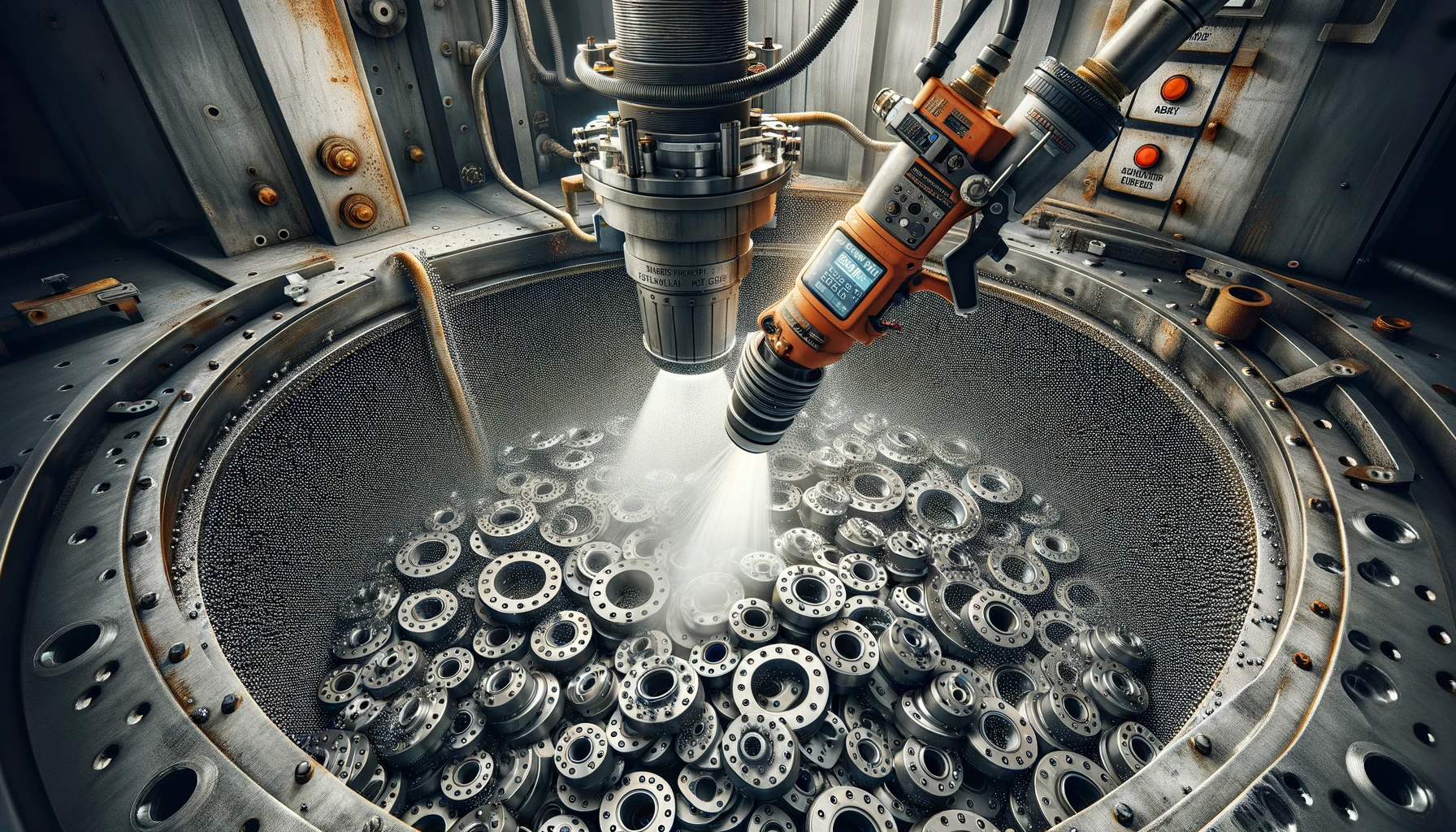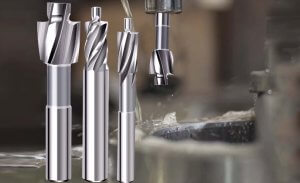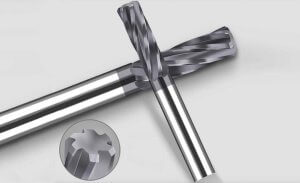Introduction: The Fusion of Bead Blasting and CNC Machined Rivets
In the intricate world of modern manufacturing, the confluence of advanced technologies like CNC machining and bead blasting represents a pinnacle of precision and quality. CNC machining stands as a cornerstone in the fabrication of high-precision components, with rivets being no exception. These small but critical components hold together the very framework of diverse industries, from the soaring aerospace sector to the dynamic automotive industry. However, the journey from a raw rivet to a component ready to take on structural responsibilities involves more than just precise machining; it requires a surface treatment that enhances its performance and longevity. This is where bead blasting, a revered surface finishing process, plays a pivotal role.
Bead blasting, the process of propelling abrasive bead media against the surface of components under high pressure, does more than just enhance aesthetic appeal. It improves mechanical properties by inducing beneficial surface compressive stress and removing surface defects, making it an invaluable step in the preparation of CNC machined rivets for their critical roles.
As industries evolve and demand more from their components, the integration of CNC machining and bead blasting has become more nuanced, facing new challenges and embracing innovative solutions. This article delves into the symbiotic relationship between these two technologies, exploring the technical challenges, industry-specific requirements, and future advancements that shape their application in the world of rivets.
Bead Blasting Basics: Process and Applications
At its core, bead blasting is a surface treatment process that involves the use of small, spherical beads made from materials such as glass, ceramic, or metal. These beads are propelled at high velocities towards the surface of a component, effectively cleaning or modifying its surface texture.
Process Overview:
- Equipment used for bead blasting includes a blasting chamber, air compressor, and a blasting gun. The choice of equipment significantly influences the efficiency and quality of the process.
- Bead Media: The selection of bead media is critical. Glass beads, for instance, offer a balance between aggressiveness and surface finish, making them ideal for a wide range of applications.
Applications in Industries:
- Automotive: Bead blasting is used to finish automotive parts, such as engine components, ensuring they meet strict surface roughness criteria.
- Aerospace: In the aerospace industry, bead blasting is employed to prepare surfaces for bonding or coating, crucial for the longevity and performance of aircraft components.
Special Requirements for CNC Machined Rivets: Understanding Industry Needs
CNC machined rivets, integral to structural assemblies across various industries, must adhere to stringent specifications. These specifications often include tight tolerances, high strength, and exceptional reliability.
Industry-Specific Needs:
- Aerospace: Rivets used in aircraft manufacturing must withstand extreme conditions, necessitating precise CNC machining followed by appropriate surface treatments like bead blasting to ensure fatigue resistance and durability.
- Automotive: In the automotive sector, rivets contribute to the structural integrity of vehicles. Here, bead blasting not only improves the rivet’s appearance but also its resistance to environmental factors.
Technical Challenges: Difficulties of Bead Blasting in Rivet Machining
Maintaining the integrity of CNC machined rivets during bead blasting presents several challenges. The process can inadvertently alter the rivet’s surface and dimensions, impacting its fit and function.
Detailed Case Study: Aerospace Component Manufacturer
An aerospace component manufacturer faced challenges with bead blasting titanium rivets. The aggressive nature of traditional blasting was causing surface pitting and dimensional changes, compromising the rivet’s aerodynamic performance and structural integrity.
Solution Process:
- Equipment Used: The manufacturer switched to a precision bead blasting machine capable of finely controlling blast pressure and media flow.
- Parameter Adjustments: Blast pressure was reduced by 20%, and the duration was carefully timed to minimize surface impact while achieving the desired finish.
- Media Selection: A switch to finer, spherical ceramic beads ensured a smoother finish without compromising the rivet’s structural integrity.
Overcoming the Challenges of Bead Blasting Process
Innovative solutions in bead blasting aim to mitigate the impact on CNC machined rivets, focusing on equipment precision and process optimization.
Detailed Case Study: High-Performance Automotive Rivets
A high-performance automotive manufacturer was experiencing inconsistent finishes on aluminum rivets, affecting assembly quality and aesthetics.
Solution Process:
- Equipment Upgrade: The introduction of an automated bead blasting system allowed for uniform media distribution and consistent blasting angles.
- Process Control: Implementing a closed-loop control system enabled real-time adjustments to blasting parameters, ensuring consistent quality.
- Media Optimization: Custom-engineered ceramic beads were developed to match the aluminum’s hardness, reducing material removal and preserving dimensional accuracy.
Industry Case Studies: Successful Applications of Bead Blasted Rivets
Bead blasted rivets find critical applications across various sectors, each with unique requirements
and challenges.
Detailed Aerospace Application:
- Challenge: A leading aerospace firm needed to increase the fatigue life of wing assembly rivets.
- Solution: Custom bead blasting protocols were developed, utilizing low-impact glass beads to enhance surface compressive stress without altering the rivet’s microstructure.
- Outcome: The treated rivets showed a 30% increase in fatigue life, significantly enhancing aircraft performance and safety.
Detailed Automotive Application:
- Challenge: An automotive company required improved paint adhesion on chassis rivets.
- Solution: A bead blasting process was tailored with specific aluminum oxide media to create an ideal surface texture for paint adhesion.
- Outcome: Post-blasting, paint adhesion tests exceeded industry standards, leading to a reduction in paint failures and warranty claims.
Looking Ahead: Advancements and Applications of Bead Blasting Technology
The bead blasting field is ripe for advancements, with ongoing research aimed at improving the process’s efficiency and adaptability to new materials.
Emerging Innovations:
- Advanced Abrasives: Research into composite media offers the potential for customized surface finishes with minimal material impact.
- Automation and Process Control: Developments in robotics and AI offer prospects for fully automated bead blasting systems with adaptive process controls, ensuring high consistency and quality.
Case Study: Next-Gen Manufacturing Facility
A pioneering project at a next-gen manufacturing facility showcased the integration of AI-driven bead blasting units, achieving a 40% improvement in processing time while maintaining high-quality standards for CNC machined rivets.
Other Articles You Might Enjoy
- Innovative CNC Machining for Advanced Spacecraft Components
Introduction: CNC Machining and its role in Spacecraft Components Computer Numerical Control (CNC) machining has, over the years, proven to be one of the most integral pillars within manufacturing industries.…
- Choosing the Right Lubrication for CNC Machining of Aluminum Alloys: What’s Best?
Introduction to CNC Machining and Aluminum Alloys The emergence of Computer Numerical Control (CNC) machining has revolutionized the process of metal cutting, offering a highly precise method for crafting intricate…
- CNC Machining Parts Factory: Specializing in High-Quality Steel
Introduction to CNC Machining and its Significance CNC (Computer Numerical Control) machining is a critical component in modern manufacturing, responsible for executing complex cuts and designs with absolute precision. This…








